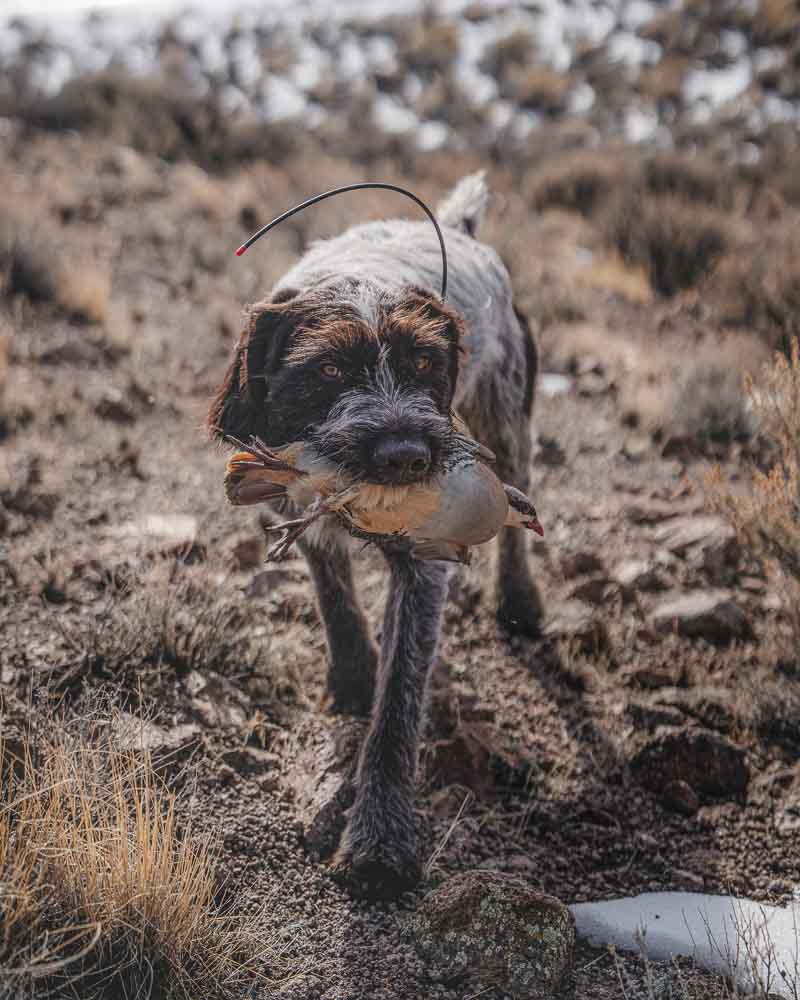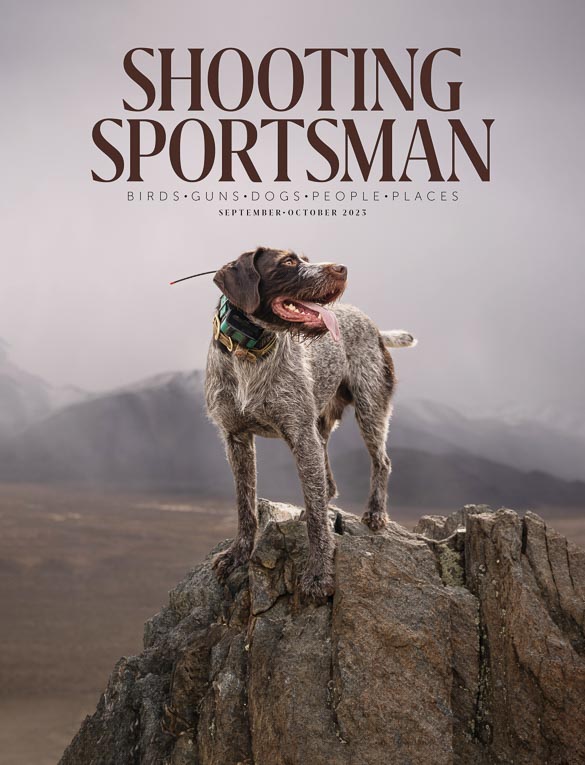Mixed-bag hunting in the West
One of the joys of upland hunting is the diversity in opportunities. The diversity in species, the diversity in landscapes, the seasons that overlap and the seasons that start early and/or finish late—making the overall upland season longer than any others. When upland opportunities are compared to those for big game, turkeys and even waterfowl, we should consider ourselves lucky, as we really are spoiled for choice. But really why should one have to choose at all? By that I mean there is a certain satisfaction to reaching into your bird vest at the end of a long day and pulling out a variety of species. It is the joy of taking a mixed bag.
I am lucky to be an upland hunter living in the West. My season is long—running from September to February—and I have opportunities to take mixed bags throughout. When I plan hunts, it’s rare that I specifically target one species. Sure, one species may be the main focus of a hunt, but I always try to choose locations where multiple species inhabit the same areas.

While a mixed bag could happen in a single day—such as on a hunt that starts in the mountains for grouse and finishes in the lowlands for quail—the most exciting opportunities are those where you can bag a variety of species on the same walk. Learning about individual species and where habitats overlap is essential to planning these types of hunts.
If you’ve always wanted the chance to bag multiple species on one walk, here are some tips that will help set you up for success.
Location, Location
When trying to locate an area with mixed-bag potential, you need to decide what the primary target species is. The target species should be one that will show its face even on an average day, just so you know that there will be birds to hunt, with other species being “bonus birds.” Thankfully many Western species have overlapping habitats, so with proper planning, opportunities should present themselves.

If you’re new to an area or on your first road trip out West, the place I’d start is with a particular state’s hunting regulations. As part of the description of each gamebird, there is often a range map that shows the approximate area that the species inhabits within the state. This is very helpful when deciding on a general area to hunt and also lets you check the season dates and regulations that will dictate much of what you can do. The general rule in the West is that November and December offer the most opportunities, as those months are when the vast majority of seasons are open. There are, of course, exceptions, so be sure to check every detail in a state’s regulations before you hit the road.
The next step is to choose a target species. Is there a gamebird you love to hunt or have always wanted to hunt? Pick that one and start there. Let’s say that chukar have been at the top of your list and you’re planning a road trip to chase them. Chukar don’t necessarily share habitats with other birds, but you can certainly chase other species on the same hunt, as often their habitats will touch each other’s. The trio of chukar, Hungarian partridge and California quail is a common mixed bag that is pursued in the Great Basin states of Nevada, Utah, Idaho and Oregon.
Covering Ground
Using range maps in the regulations, you should be able to narrow down a general area to hunt—a place where all three species are on the map together. While the birds may live in the same area of the state, they won’t necessarily be on the same part of the mountain. Chukar are known for living on steeper terrain near the top, Huns will typically be found in the more gentle, rolling foothills, and California quail will likely be found in thick cover such as willows, blackberries and thick, old-growth sage brush in draws and creek beds. Given the general lack of water in this region, the birds are often found in close proximity to some kind of perennial water source, such as a creek or a spring. Now that you’ve located a spot on the map where ranges intersect—a mountain range, say, with an abundance of springs—it’s time to drop the tailgate, turn the dogs loose and burn some boot leather.

Once you park the truck, you should come up with a plan for how to work the mountain so that you’re not running up and down and all over the place. Let the wind dictate which direction you start, and try to stick to one elevation, working your way into zones where the other species may be. Like most chukar hunters, I generally try to begin at the top of the mountain and work my way down to the rolling hills for the walk back, taking small detours to look for quail when I see suitable cover. This strategy has worked for me over and over, and even if you’re new to an area, if you follow this formula on several different mountains, you’ll surely get opportunities at that mixed bag you’ve always craved.
Waterfowl While Upland Hunting
Another fantastic opportunity is adding waterfowl to the equation. One of my best mixed bags included chukar, Huns, California quail, pheasants as well as a mallard and a pintail that I jump-shot on the walk. It made for a memorable day and a heavy vest to haul back to the truck.
Even more so than with upland birds, water is the essential ingredient here, and you’ll need to focus on it if adding ducks to your bag is a priority. Try to base your hunt around larger bodies of water or slow-moving rivers, and be sure to check back eddies on faster-moving rivers. Once winter is in full swing, keep in mind bodies of water that are slower to freeze, as this is where the ducks will be.

A very important thing to consider when including waterfowl in the equation is nontoxic loads. Waterfowl are federally regulated, and should you bump into a game warden, you had better be able to show him the nontoxic loads used to bag any ducks. Since opportunities for waterfowl on an upland hunt are likely few and far between, you don’t actually need to bring that many nontoxic shells with you. Before I started shooting nontoxic exclusively, I would bring five shells, all of which would fit into a shell holder attached to the outside of my vest. They were easy to access and a different color than the rest of my shells, so they were easy to identify if needed. Some of the more modern nontoxic loads pack quite a punch, and I have successfully knocked down Canada geese with Apex Ammunition’s No. 7卦 TSS shot. Of course, always check state regulations regarding having any lead loads in your possession when hunting waterfowl.
OK, Now What?
If you’re new to upland hunting, the information listed above may seem daunting; but with experience, all these things become second nature. Experienced hunters can drive down the highway and identify habitat that may hold birds, but if you’re still working up to that, the best thing to do is get your boots on the ground. All the Internet research in the world won’t provide the experience gained from spending time in the field with a dog, and that’s exactly what you’ll need to do to perfect this type of hunting.
If your local area offers the opportunity for mixed bags, the best way to prepare for the season is by summer scouting, which is an essential part of most serious upland hunters’ routines. If you don’t know where to start, don’t go around asking on Internet forums. This is generally considered bad practice, as most people won’t be willing to share areas, some will get upset that you asked and those who are willing to share will now have told the whole Internet—so you can expect the area(s) to get plenty of traffic. A better option is to call the local fish & game office or, better yet, pay a visit to the local biologist. The local office should have experts who are willing to help, maps to take home and invaluable local knowledge. If you’re going somewhere new, make a call to the area’s local office before you go.
Now back to the boots on the ground. If you plan to get out in the field with your dog to scout, it’s good practice to give the birds a rest during breeding and hatching times and to do your scouting in July or August once younger birds have developed more. Keep in mind that these times can be hot, and if you’re in an area with water, that means you’re in snake country too. So be careful.
Most upland birds don’t “migrate,” so if you find them in July or August, there’s a solid chance they’ll be close by come September and October. That said, upland birds do move, so consider where they are when you find them and why they are there, and keep this in mind during the season. Consider things like proximity to water, elevation, slope aspect and cover. Finding birds in different places at different times tells a story, and it’s up to you to read along and learn more about your quarry.
Carpe Diem, Carpe Varietas
OK, so I don’t know Latin and totally made up that headline, but I’ve said it before and I’ll say it again: Mixed bags are the best thing about upland hunting. They keep you on your toes, give your dogs more experience and make for some enviable table fare upon returning home. I’ve had some weird mixes, like a chukar-and-ruffed-grouse combo as well as an epic hunt last season that included chukar, Huns, California quail, a bufflehead, a teal and even a bobwhite! My personal favorites are early-season adventures in the mountains chasing mountain quail, ruffed grouse and sooty grouse. The opportunities and combinations of species are endless, which is what makes this type of hunting so much fun.
Whether you are chasing a mixed bag locally or on an epic cross-country road trip, with a little bit of effort, opportunities are available to everyone. And trust me: The effort is worth it. Get out there and explore.
Buy This Issue / Subscribe Now

Read our Newsletter
Stay connected to the best of wingshooting & fine guns with additional free content, special offers and promotions.




